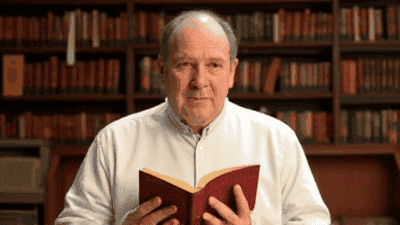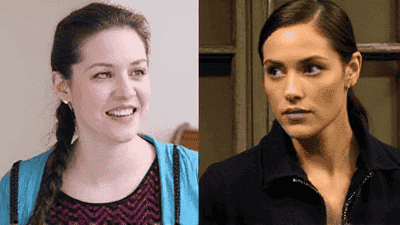
Page to Screen: Deconstructing the Art of Book Adaptations That Soar or Stumble
Introduction

The journey from the written page to the silver screen represents one of storytelling's most ambitious transformations. At its core, a book adaptation seeks to translate a deeply personal literary experience into a shared visual spectacle, a process fraught with artistic and practical challenges. This seemingly straightforward task often conceals complex mechanisms, demanding a nuanced understanding of narrative, character, and thematic essence, which ultimately dictates an adaptation's fate.
Book adaptations hold immense cultural and economic importance, offering beloved narratives new life and introducing them to wider audiences. They impact the scientific community through studies on narrative theory, semiotics, and audience reception, while critically influencing the entertainment industry's financial models and creative output. From the fervent debates among fans to scholarly analyses of narrative fidelity, adaptations spark discussions about artistic interpretation and commercial viability. Current developments see streaming platforms investing heavily in adaptations, often extending single books into multi-season series, altering the very definition of "fidelity." What impact would it have on our understanding or practice of storytelling if we failed to fully comprehend the intricate alchemy behind translating literary worlds into compelling cinematic experiences?
Translating Vision: When Adaptations Transcend the Source
Mastering Fidelity and Creative Interpretation
Successful book adaptations do not merely transcribe text; they interpret and elevate the source material, understanding that cinematic language differs profoundly from literary prose. The key lies in capturing the essence – the core themes, character arcs, and emotional resonance – rather than a rigid, scene-by-scene replication. Peter Jackson's The Lord of the Rings trilogy exemplifies this, taking J.R.R. Tolkien's sprawling epic and translating its spirit of adventure, friendship, and the battle against evil into breathtaking visual storytelling. Changes were made (e.g., character emphasis, condensed timelines), but they served the film's narrative momentum without betraying the original's soul. Similarly, The Godfather, adapted from Mario Puzo's novel, saw director Francis Ford Coppola distill the novel's exposition into powerful visual cues and character performances, crafting a film that stands as a masterpiece in its own right, perhaps even surpassing its source in public consciousness. The art is in knowing what to omit, what to emphasize, and how to use cinematic tools—like sweeping cinematography (the vast landscapes of Middle-earth) or an iconic score (Nino Rota's theme for The Godfather)—to evoke feelings and ideas that might take pages to describe in print. This requires a director and screenwriter who possess not just respect for the original but also a powerful vision for its visual incarnation, akin to a painter reinterpreting a classic symphony.
Lost in Translation: The Anatomy of Cinematic Disappointment

Common Missteps and Their Repercussions
The path from page to screen is littered with cautionary tales, where promising literary works falter dramatically in their cinematic renditions. These failures often stem from a fundamental misunderstanding or disregard for the source material's core identity. Common missteps include: attempting to cram too much narrative into a single film, resulting in rushed pacing and underdeveloped characters; making drastic, inexplicable changes to plot or characterization that alienate established fans; miscasting key roles, undermining the emotional core; or lacking the budget and vision to convincingly realize a story's scope. For instance, the film adaptation of Christopher Paolini's Eragon (2006) was widely criticized for its condensed plot, shallow character development, and a perceived failure to capture the magic and depth of the fantasy novel. Similarly, Percy Jackson & the Olympians: The Lightning Thief (2010) faced backlash for its significant departures from Rick Riordan's popular book, altering key character ages and plot points without clear narrative benefit. These instances highlight how a lack of fidelity to the source's thematic weight or narrative structure can unravel an adaptation.
| Adaptation Title | Source Material Fidelity | Critical Reception (Average Score) | Box Office Performance (Worldwide, Est.) |
|---|---|---|---|
| The Lord of the Rings | High (Spirit) | 91% (Rotten Tomatoes) | $2.99 Billion |
| The Godfather | High (Essence) | 97% (Rotten Tomatoes) | $291 Million |
| Eragon | Low (Plot & Tone) | 16% (Rotten Tomatoes) | $250 Million |
| Percy Jackson: Lightning Thief | Medium-Low (Key Changes) | 49% (Rotten Tomatoes) | $226 Million |
| Dune (2021) | High (Vision & Scope) | 83% (Rotten Tomatoes) | $402 Million |
As illustrated by the table, adaptations that demonstrate a strong understanding and respectful interpretation of their source material often correlate with higher critical acclaim and robust commercial success. Conversely, those that veer too far or mishandle the essence tend to suffer. While box office figures are influenced by many factors, a strong connection to the source material's integrity clearly resonates with both critics and audiences, affirming that successful translation isn't just about recognition but about the quality of the narrative transition.
Beyond the Pages: The Collaborative Alchemy of Filmmaking
The Director's Chair and the Screenwriter's Pen
The success or failure of a book adaptation ultimately rests on the collaborative synergy of numerous creative minds, particularly the director and screenwriter. The screenwriter's initial task is to distill hundreds of pages into a concise script, identifying the core narrative, essential dialogue, and pivotal character moments that can translate effectively to a visual medium. This often involves making difficult decisions about what to cut, what to combine, and what to invent to serve the film's structure. Crucially, the internal monologues and intricate character psychologies that thrive in literature must be externalized through action, expression, and dialogue.
The director then takes this script and breathes visual life into it. Their vision dictates the film's tone, aesthetic, casting, and overall cinematic language. A director like Stanley Kubrick, for instance, famously took considerable liberties with Stephen King's The Shining, reshaping the narrative to fit his unique artistic perspective, resulting in a film revered by critics but debated by the author. Conversely, an adaptation like Pride & Prejudice (2005) succeeds because director Joe Wright, working with screenwriter Deborah Moggach, artfully captured the witty dialogue and subtle social commentary of Jane Austen’s novel, enhancing it with stunning visuals and sensitive performances. The chemistry between the actors, guided by the director, must convey the unspoken dynamics and emotional weight established in the book. This intricate dance between textual foundation and visual interpretation highlights the profoundly collaborative and transformative nature of the adaptation process.
Conclusion

The odyssey from the printed word to the moving image is a testament to storytelling's enduring power and adaptability. This exploration has highlighted that successful book adaptations are not mere facsimiles but rather thoughtful reinterpretations that capture the essential spirit, themes, and characters of their literary antecedents while embracing the unique strengths of cinematic expression. Whether through the epic scale of The Lord of the Rings or the nuanced character studies of The Godfather, the "right" adaptations demonstrate a profound respect for the source combined with an innovative vision for its visual translation. Conversely, "wrong" adaptations often falter by misjudging the core appeal, making arbitrary changes, or failing to harness the collaborative potential of filmmaking. The critical findings underscore that true success lies in navigating the delicate balance between fidelity and creative liberty, ensuring the narrative's soul remains intact and vibrant for a new audience. This continuous effort reaffirms the profound value of literary narratives in inspiring new artistic forms and fostering ongoing cultural dialogue.
Looking ahead, the landscape of book adaptations is poised for fascinating evolution. The proliferation of streaming services is driving a surge in multi-part series adaptations, allowing for greater narrative depth and character development that feature films often cannot accommodate. This shift could redefine what constitutes "fidelity," moving towards more comprehensive and less condensed translations. Furthermore, advancements in visual effects and immersive technologies like virtual and augmented reality offer unprecedented opportunities to bring fantastical literary worlds to life with an even greater degree of realism and audience engagement. However, these technological leaps also present new challenges, including ethical considerations in AI-driven adaptations and the potential for commercial pressures to override artistic integrity. Interdisciplinary integration, perhaps drawing insights from cognitive science on narrative impact, will be crucial. The ongoing debate about what constitutes a "good" adaptation will continue to be a vital conversation, emphasizing the enduring importance of rigorous analysis, thoughtful creative choices, and continuous research into the intricate art of storytelling across diverse media.
Frequently Asked Questions (FAQ)
Q: Is a 'faithful' adaptation always the best one? A: Not necessarily. The concept of "faithfulness" in adaptation is often misunderstood as a literal, word-for-word, or scene-for-scene recreation of the book, which is rarely effective for cinema. Books and films are fundamentally different mediums with their own unique languages and strengths. A novel can delve into internal monologues, elaborate descriptions, and complex backstories over hundreds of pages, whereas a film typically has 90-180 minutes to convey its story primarily through visual and auditory cues. Therefore, a truly faithful adaptation often means capturing the essence, spirit, and themes of the original work, along with its key characters and major plot points, rather than a slavish reproduction of every detail.
Sometimes, changes are not just permissible but necessary. For example, a character's internal thoughts might be conveyed through their actions or expressions in a film, rather than a voiceover narration. Subplots might need to be condensed or removed to maintain cinematic pace. A director might choose to emphasize a particular theme or character arc that resonates more powerfully on screen. A successful adaptation might even improve upon aspects of the book, perhaps clarifying an ambiguous plot point or deepening a character's motivation through visual performance. The goal is to produce a compelling, coherent, and emotionally resonant film that stands on its own artistic merit while honoring the core identity of its source. Peter Jackson's The Lord of the Rings is often cited as a highly successful adaptation precisely because it understood the spirit of Tolkien's world, even while making necessary structural and pacing changes for the screen.
Q: How much creative liberty can an adaptation take before it loses its identity? A: The amount of creative liberty an adaptation can take before losing its identity is a hotly debated and subjective point, with no single definitive answer. It exists on a spectrum. On one end, you have adaptations that are very close to the source, aiming for high fidelity to plot, character, and tone (e.g., No Country for Old Men by the Coen Brothers). On the other end, you have radical reinterpretations that use the source material as a jumping-off point for a largely new narrative or thematic exploration (e.g., Apocalypse Now, loosely based on Joseph Conrad's Heart of Darkness).
The critical factor is whether the changes serve an artistic purpose and whether the resulting work still resonates with the fundamental "soul" of the original. If a film changes characters so dramatically that their motivations are unrecognizable, or alters the core themes to the point where the original message is lost, then it risks alienating both fans of the book and new audiences who might feel the story lacks cohesion. However, if a director takes liberties to update a story's setting, explore a different perspective, or enhance certain themes for a contemporary audience, and does so successfully, the adaptation can be highly regarded. For instance, the BBC series Sherlock radically modernizes Arthur Conan Doyle's detective but captures his essential intellect and complex relationship with Watson, thus retaining its core identity despite the modern setting. The audience's perception of the original's flexibility and the artistic merit of the new creation largely determine the success of such bold reinterpretations. Ultimately, if the adaptation produces a powerful and meaningful story, even a loose one can be considered successful, but it walks a fine line between inspiration and outright disregard.








